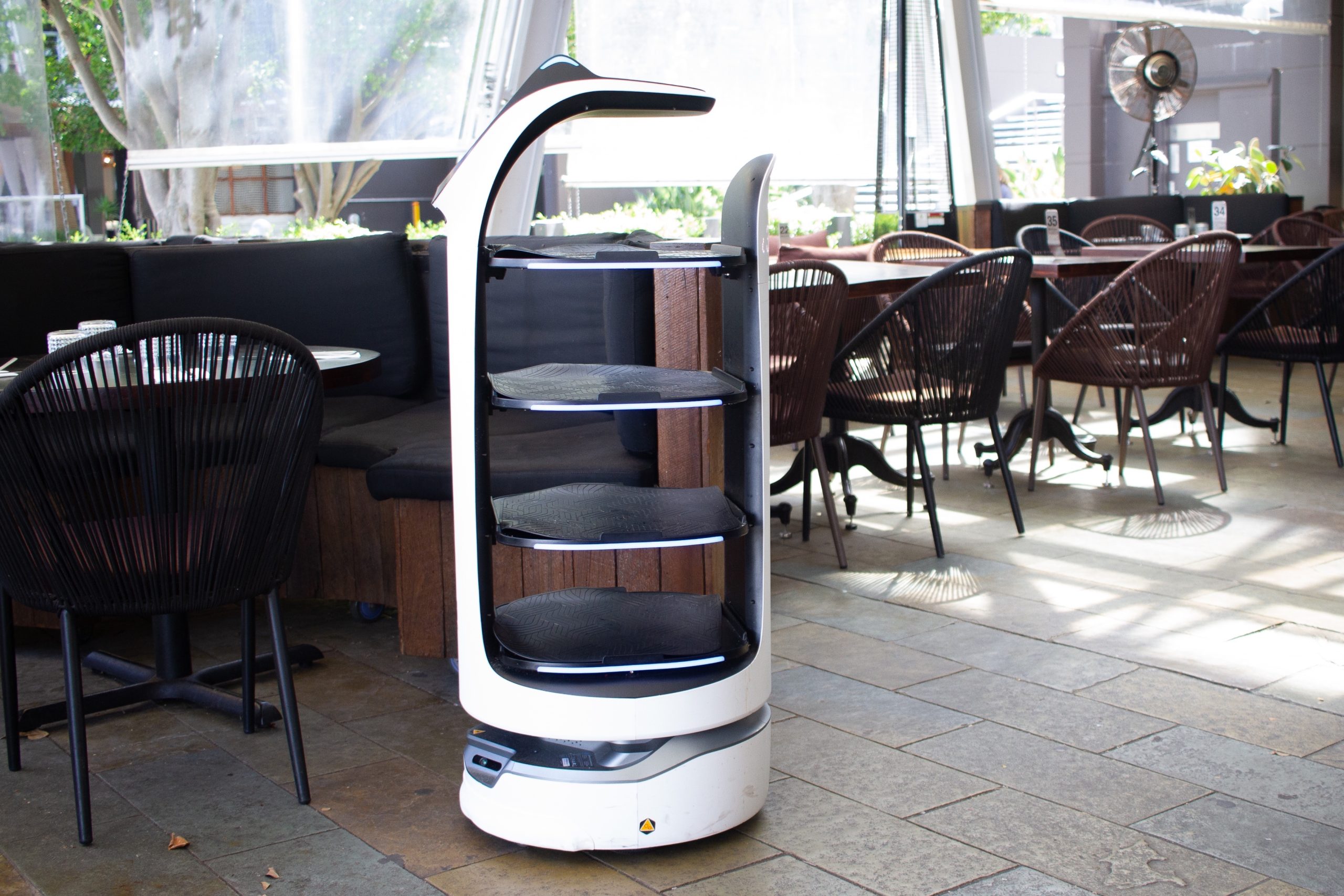Restaurants and robots: Don’t be alarmed
So much of the recent news about robots in restaurants have focused on the kitchen, where experts seek to engineer the perfect automated pizza maker or a robotic fry station attendant. While the jury’s still out on whether these devices could ever demonstrate the dexterity humans have for making food taste good, they seem more approachable for many restaurant operators than service robots. Even so, the launch of these tools is often marked with headlines like “Attack of the pizza-making robots” and “The robots are here,” as if we’re facing an alien invasion!
If you’ve ever been served by a robot in front of a restaurant, it can be rather surprising at first. For customers and staff alike, the presence of these automated workers can set off alarm bells. Customers might worry the lack of human interaction will ruin their experience or result in unnecessary mistakes. For employees, robots might incite fears of being replaced.
The ultimate helping hand, robots are uniquely positioned to support restaurants through the current wave of labor shortages and inflated food costs — that is if they’re introduced and used correctly.
To ensure robots become an ally to service staff, it’s important to set expectations about what these automated co-workers can and can’t do. They are best utilized to perform physical, repetitive, and manually straining tasks, thus relieving staff from these duties. For example, they can carry multiple hot pots out of the kitchen and bring them to guests, avoiding painful, costly spills along the way. They can help servers clear the entire dining room in one quick trip. They can even wash the floors before, after and during a shift.
All these routine tasks, when handed off to a robot, free up front-of-house employees to do the more important tasks that require interaction with guests, like recommending the right dish, making memorable conversation, or fulfilling a more specific ask. Servers have more time to engage with guests, check in on their tables, and generally ensure an exceptional dining experience when accompanied by a robot. The keyword is accompanied. Make sure employees know the bot is there to support them, not replace them.
Not only will the robots work alongside servers, but in time, this collaboration will also result in servers on duty taking home a higher percentage in tips — robots don’t need to be paid. By delivering food, cleaning, and serving, robots ensure workers are less overworked and less physically taxed while being paid the same, or perhaps even more than before.
Enhancing the experience
Robots can be a marketing tactic for many restaurants, as some diners will seek out this novel dining experience. However, for more particular customers expecting a traditional service, robots can seem like the end of the golden age of dining. It will be important for robots to follow the established rules of restaurant service and enhance the experience without taking anything, including familiarity, away.
Robots should avoid hitting guests. This may seem obvious but from a technical standpoint, it is actually one of the harder parts of introducing robotics. Advanced AI is required in order to realize intelligent delivery in restaurant scenarios. The positioning technology must be effective to navigate dining rooms with multiple walkways and several dozen guests. New vision-based robot localization and mapping technology allow some restaurant bots to find their way without markers, making them much easier to deploy, especially in high-ceiling environments. Adaptability in all scenarios, like recognizing and slowing down for elderly guests and children, is also critical to ensure customers feel comfortable around robots.
Not only does advanced positioning technology reduce the risk of collisions, but it also increases the likelihood of robots bringing the right food to the right table. Few things annoy a guest more than waiting for food only to have it be the wrong dish or having it spill on the way out of the kitchen. Robots can build trust with guests by consistently performing as they intended.
Bots come in all shapes and sizes with a unique variety of capabilities. For restaurants, it’s as important for the robots to be aesthetically pleasing as it is for the carefully designed dining room. A terminator-looking bot is probably not going to put guests at ease. But something cute and cleanly designed will make guests feel comfortable and entertained. Taking this a step further, advanced robots can also be engaging, welcoming customers with greetings, telling jokes, and providing voice or emoji feedback. While they’ll never replace a human in terms of engagement, robots can appear more approachable with these small touches.
To ensure an exceptional experience for both staff and diners, robots should always be accompanied by a human from their very first meeting until the end of the meal. Staff will feel empowered to do what they do best, lending a human touch to every customer’s experience while avoiding the more difficult aspects of the job. Meanwhile, customers will enjoy engaging with relaxed servers who have time to discuss the menu and go above and beyond to provide five-star service, no matter where we eat.


 Systems are the way you do things. They are the procedures that can be replicated.
Systems are the way you do things. They are the procedures that can be replicated.